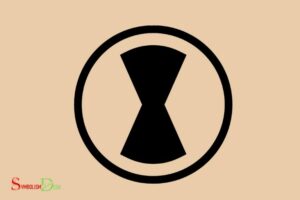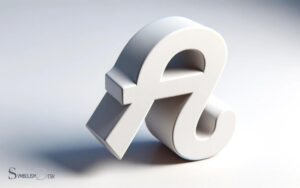What Does the C Symbol Mean in Music? 4/4 Time Signature!
The “C” symbol in music stands for Common Time, which represents a 4/4 time signature.
In music notation, time signatures indicate how many beats are in each measure and which note value gets the beat.
The “C” symbol is an abbreviation for Common Time, which is one of the most frequently used time signatures in Western music.
It consists of 4 quarter-note beats per measure, meaning there are 4 beats in each measure, and the quarter note receives one beat.
Common Time is found in various genres of music, including classical, pop, rock, and jazz. It provides a strong and stable rhythmic foundation for both simple and complex compositions.
The “C” symbol in music notation simplifies the appearance of the 4/4 time signature, making it easier to read and understand the rhythm of a piece.
8 Interpretations of the ‘C’ Symbol in Music
| C Symbol | Meaning in Music |
|---|---|
| C | Common time, equivalent to 4/4 time signature |
| C with a vertical line through it | Cut time, also known as alla breve, which is a 2/2 time signature |
| C7 | C dominant seventh chord, consisting of the notes C, E, G, and Bb |
| Cm | C minor chord, consisting of the notes C, Eb, and G |
| CM | C major chord, consisting of the notes C, E, and G |
| CM7 | C major seventh chord, consisting of the notes C, E, G, and B |
| Cdim | C diminished chord, consisting of the notes C, Eb, and Gb |
| Caug | C augmented chord, consisting of the notes C, E, and G# |
Key Takeaway

Five Facts About: The ‘C’ Symbol in Music
Understanding The Basics: Music Notation System
Brief Overview Of The Music Notation System
Music notation is a system used to represent musical sounds and rhythms in written form, making it easier for musicians to read and play the music accurately.
This system consists of various symbols and signs used to indicate pitch, duration, timing, and volume of a musical piece.
Importance Of Symbols In Music Notation
Symbols play a crucial role in music notation as they convey all the necessary information needed for musicians to read and play the music accurately.
These symbols can be represented through various forms such as notes, clefs, rests, dynamics, accidentals, and key signatures, among others.
Introduction To The Most Commonly Used Music Symbol – The C Symbol
The c symbol is one of the most widely used symbols in music notation. It is a simple symbol that represents the pitch of middle c, which is the most frequently used note in music.
Here are some interesting facts about the c symbol:
- The c symbol is a hollow circle that sits at the bottom of the staff, indicating the pitch of middle c.
- Middle c is the note that falls on the first ledger line below the treble clef and the first ledger line above the bass clef.
- The c symbol is often used to indicate the starting point for tuning various musical instruments, including the piano and guitar.
- In piano music, middle c is commonly used as a reference point between the bass and treble clefs, making it easier for pianists to read and play the music accurately.
- The c symbol is also frequently used to indicate the key of c major, which has no sharps or flats in its key signature.
Understanding the music notation system and its symbols is crucial for musicians to read and play music accurately.
The c symbol is just one of the many symbols used in music notation, but it plays a significant role in the world of music.
Historical Significance Of The C Symbol In Music
Historical Context Of The C Symbol In Western Music
The c symbol, also known as the “c clef,” has a long and fascinating history in western music notation. The c symbol, also known as the “c clef,” has a long and fascinating history in western music notation. It was originally used to designate the position of middle C on the staff and could be placed on different lines, giving rise to various types of clefs, such as the alto and tenor clefs. Interestingly, symbols in different contexts can hold unique meanings as well, like the foot symbol meaning on Birkenstocks, which indicates the shape of the footbed and helps users select the proper fit. Both music and footwear rely on these kinds of symbols to communicate essential information efficiently.
Here are some key points that shed light on this musical symbol’s historical context:
- The first known use of the c clef was in the 11th century, during a time when monks were the primary music makers in western society.
- The c clef was intended to help singers read neumes, which were the early forms of musical notation.
- Over time, the c clef became more prominent in music notation, especially in vocal music, and served to indicate the pitch of certain parts sung by alto and tenor voices.
- The c clef evolved throughout the baroque, classical, and romantic periods, with composers experimenting with its placement and usage in different ways.
Evolution And Significance Of The C Symbol Over Time
As music notation and theory evolved, so did the use and significance of the c clef.
Here are some key points to know about the evolution and significance of this symbol over time:
- During the baroque era, the c clef was commonly placed on the middle line of the staff, indicating the pitch of middle c. this usage continued into the classical era, but with some notable variations.
- In the romantic era, composers began to experiment more with the placement of the c clef, as well as with other clefs and notation systems. This experimentation led to a gradual decline in the use of the c clef, especially in instrumental music.
- Today, the c clef is still used in some contexts, such as choral music, but its usage is far less common than it was in past centuries. Nonetheless, it remains a fascinating and important symbol in the history of music notation.
Cultural Variations And Regional Differences In The Use Of C Symbol
Interestingly, the usage and significance of the c clef varied across different cultures and regions throughout history.
Here are some key points to highlight this fact:
- In some non-western musical traditions, such as those of india and china, fixed pitch systems were used that did not require the same level of notation specificity as western music. As a result, the c clef was not widely used in these traditions.
- Other western music traditions, such as those of russia and france, developed their own variations on the c clef placement and usage that differed from those of other countries.
- Today, as western music becomes increasingly globalized, these regional differences are blurring somewhat, but the rich history of the c clef and its usage across different cultures is still an important aspect of music scholarship and practice.
Understanding The Role Of C Symbol In Music Notation
When you come across sheet music, you’ll see different symbols representing specific notes, rests, and chords that will guide you to play the music correctly.
One of these symbols is the c symbol, which plays a crucial role in music notation.
The Purpose Of The C Symbol In Staff Notation
The c symbol is a crucial element in music notation, representing the musical note c. it helps to identify the position of the note on the staff, which consists of five horizontal lines and four spaces between those lines.
The c symbol is typically placed on the ledger line, a small line used to extend the staff to accommodate notes that fall outside the range of the standard staff.
The c symbol is also significant as it acts as a reference point for other notes.
Different Ways In Which The C Symbol Is Used In Music Notation
The c symbol is not just limited to representing the musical note c. it is also used in several other ways in music notation,
Including:
- Time signatures: In sheet music, you’ll find the c symbol used in time signatures, which signify the number and type of notes that occur in a measure. For instance, the common 4/4 time signature has the c symbol on the bottom, indicating the quarter note gets one beat.
- Chords: The c symbol can represent a chord in sheet music as well. C major or c minor chords use the c symbol as their root note on sheet music.
- Key signatures: Another use of the c symbol in music notation is key signatures. Key signatures indicate which notes in a piece should be played as flats or sharps. For example, a piece in the key of c major will have the c symbol as its key signature.
Significance Of The Position Of The C Symbol On The Staff
The position of the c symbol on the staff is crucial to understanding how to play a piece. The position, whether it is on the ledger line or any other part of the staff, will determine which note is being referenced.
If the c symbol appears on the ledger line below the staff, it represents the note c3, while if it appears on the ledger line above the staff, it represents the note c5.
The c symbol plays a vital role in sheet music, representing different elements such as time signatures, chords, and key signatures. Understanding its position on the staff will ensure that you play the music correctly.
Significance Of The C Symbol In Key Signature
Music is a form of expression that has been around for centuries, and it comes with its own set of symbols and notations that convey meaning to the audience. One of the most prominent symbols in music is the c symbol, which appears in key signatures.
In this blog post, we will explore the significance of the c symbol in key signatures, how it defines a musical key, its relationship with other notes, and examples of its use in musical compositions.
How The C Symbol Defines A Musical Key
The c symbol in music represents the note of c, which in turn represents the first note in a musical scale. Therefore, the presence of the c symbol in a key signature indicates that the piece of music is in the key of c.
the key of c major is one of the most commonly used keys in western music, and its associated diatonic scale comprises seven notes: c, d, e, f, g, a, and b.
Understanding The Relationship Of The C Symbol With Other Notes In A Key Signature
In addition to the c note, a key signature contains other notes that define the key of the music piece. The placement of the other notes in relation to the c note determines the key signature’s specific key.
For instance, if a key signature has no sharps or flats, it is the key of c major, whereas a key signature with one sharp is the key of g major or e minor, and a key signature with two sharps is the key of d major or b minor.
Examples Of How The C Symbol Is Used In Musical Compositions
The presence of the c symbol in musical compositions determines the piece’s key, which can evoke specific emotions or moods in the audience.
Here are some examples of how the c symbol is used in musical compositions:
- In mozart’s piano sonata no. 16 in c major, the c symbol represents the tonic note and root of the piece’s key. The piece starts and ends with the c note and uses other notes from the c major scale, creating a bright and uplifting mood.
- Beethoven’s symphony no. 5 in c minor begins with a four-note motif that uses the c symbol. The motif is heard throughout the piece and creates a sense of tension and drama, as the key of c minor is associated with melancholy and sorrow.
- The beatles’ song “let it be” is in the key of c major, which contributes to its hopeful and optimistic message. The c note features prominently in the chorus, creating a memorable and uplifting melody.
The c symbol in key signatures is a crucial component of music notation that defines the key of a piece of music.
Its relationship with other notes in the key signature determines the specific key, and its presence in musical compositions can elicit specific emotions and moods in the audience.
Whether you’re a musician or simply appreciate music, understanding the significance of the c symbol in music can enhance your overall musical experience.
Role Of C Symbol In Classical Music
Classical music has a lot of distinctive features that make it unique from other music genres. One of these features is the use of symbols, including the c symbol.
Use Of C Symbol In Western Classical Music
The use of c symbol is quite common in western classical music. In fact, it is one of the most frequently used symbols in the musical notation.
Here are some of the popular uses of the c symbol in classical music:
- C is used to represent the note named ‘do’ in the solfege system of music.
- The c symbol is also used as the starting note in the c major key.
- C also represents the first note on the music staff or stave.
Symbolism, Significance And Interpretation Of The C Symbol In Classical Music
Symbols in music often have a certain significance or meaning. It is the same with the c symbol in classical music.
Here are some of the meanings of the c symbol:
- The c symbol represents the initial note of the first theme of a composition.
- The symbol also has a strong association with the concept of harmony.
- It is believed to symbolize the striking of a fundamental chord that announces the beginning of a new musical work.
Different Variations Of The C Symbol In Classical Music
The c symbol takes on different forms depending on the context in which it appears.
Here are some of the most common variations of the c symbol in classical music:
- C clef or alto clef: The horizontal line of the c clef is aligned with the middle line of the music staff. It is primarily used for the viola, cello, bassoon, and trombone.
- Coda sign: It is a symbol that indicates a section of a composition that should be played repeatedly or a certain passage that should be performed differently.
- The symbol can also appear as part of a musical instruction, as in the case of chord symbols.
The c symbol is a crucial element in western classical music and is used in a variety of ways. Understanding its significance and various interpretations adds to the appreciation and mastery of classical music.
Use Of C Symbol In Jazz And Pop Music
Understanding The Use Of The C Symbol In Pop And Jazz Music
The c symbol in music is one of the most common musical notations used to represent the beginning of a scale, chord or melody.
It’s the first letter of the note ‘c’ which acts as a reference point for other notes.
Let’s explore how it is used in the genres of pop and jazz.
Analysis Of How The C Symbol Is Used In Chords, Scales And Melodies In Jazz And Pop Music
Chords
- The c chord is one of the most common triads used in pop and jazz music.
- The c major chord is made up of the notes c, e, and g, while the c minor chord consists of c, eb, and g.
- Chords like c7, c9, and cmaj7 are also used extensively in jazz and pop music.
- The c dominant seventh chord, marked as c7, is composed of the notes c, e, g, and bb.
Scales
- The c scale is a fundamental scale in music which starts on the note c and consists of all the neighboring notes in an octave.
- The c major scale, which is used in most pop and jazz songs, consists of the notes c-d-e-f-g-a-b-c.
- The c minor scale is an important scale which is the relative minor to the e-flat major scale.
- The c pentatonic scale is a five-note scale which is extensively used in pop and rock music.
Melodies
- The c symbol is also used to mark the starting note of a melody in pop and jazz music.
- The melody of a song often starts on the note c and follows the c major scale.
Examples Of How C Symbol Is Used In Popular Songs
- The chorus of adele’s “someone like you” starts with a c chord progression (c – g – am – f).
- The song “let it be” by the beatles starts with a c chord.
- The melody of the song “happy birthday” starts on the note c.
- The popular jazz standard “take the a train” by duke ellington starts with a c7 chord.
The c symbol is a fundamental notation in music which has widespread use in the genres of jazz and pop.
Understanding how it is used in chords, scales, and melodies is crucial for any musician looking to create or play music in these genres.
What Does the Hourglass Symbol Mean in Music Notation?
The hourglass symbol meaning in texting is a music notation that signifies a fermata, indicating a pause or hold on a note or rest. It is an indication for the performer to sustain the duration of the note, extending its length beyond the written value. The hourglass shape visually represents the concept of time standing still momentarily in the music.
FAQ About The C Symbol Mean In Music
What Is The C Symbol In Music?
The c symbol in music represents the note c on the musical scale.
What Does The C Symbol Mean In Sheet Music?
In sheet music, the c symbol represents a note that is played or sung at a pitch of middle c.
What Are The Different Types Of C Symbols?
There are two types of c symbols in music notation: the regular c symbol and the c symbol with a line through it.
What Is The Difference Between C And C With A Line Through It?
The c symbol with a line through it represents a note that is played or sung one octave lower than the regular c symbol.
How Important Is The C Symbol In Music?
The c symbol is one of the most important symbols in music notation, as it helps musicians identify the correct pitch for a note.
Conclusion
As we wrap up this blog post, we hope that we’ve given you a clear understanding of what the letter c symbolizes in music.
From being a note on the staff to representing different chords, the c symbol can signify many things depending on the context.
It is essential to have a good grasp of musical notation and theory to fully comprehend its meaning in music.
By knowing what the basic symbols and terms represent, you can improve your musical skills and communicate effectively with other musicians.
Keep practicing and learning, and you’ll enhance your appreciation for the beauty and complexity of music.
Remember, the journey of learning music is a never-ending one, and the symbol c is just the beginning!






